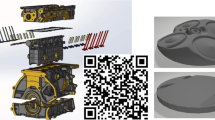Abstract
Exhaust gas recirculation (EGR) is an emission control technology that allows for a significant reduction in NOx emissions from light- and heavy-duty diesel engines. The primary effects of EGR are a lower flame temperature and a lower oxygen concentration of the working fluid in the combustion chamber. A high pressure loop (HPL) EGR is characterized by a fast response, especially at lower speeds, but is only applicable if the turbine upstream pressure is sufficiently higher than the boost pressure. On the contrary, for the low pressure loop (LPL) EGR, a positive differential pressure between the turbine outlet and the compressor inlet is generally available. However, a LPL EGR is characterized by a slow response, especially at low and moderate speeds. In this study, of the future types of EGR systems, the dual-loop EGR system (which has the combined features of the high-pressure loop EGR and the low-pressure loop EGR) was developed and was optimized under five selected operating conditions using a commercial engine simulation program (GT-POWER) and the DOE method. Finally, significant improvements in the engine exhaust emissions and performance were obtained by controlling several major variables.
Similar content being viewed by others
References
Cho, K., Han, M., Wagner, R. M. and Sluder, C. S. (2008). Mixed-source EGR for enabling high efficiency clean combustion mode in a light-duty diesel engine. SAE Paper No. 2008010645.
Czarnowski, R., Joergl, V., Weber, O., Shutty, J. and Keller, P. (2008). Can future emissions limits be met with a hybrid EGR system alone?. 2008 Diesel Engine-Efficiency and Emissions Research (DEER) Conf..
Gamma Technologies (2006). GT-POWER. User’s Manual Version 6.2.
Heywood, J. B. (1988). Internal Combustion Engine Fundamentals International Edition. McGraw-Hill. New York. Singapore.
Lee, S. J., Lee, K. S., Song, S. H. and Chun, K. M. (2006). Low pressure loop EGR system analysis using simulation and experimental investigation in heavy-duty diesel engine. Int. J. Automotive Technology 7,6, 659–666.
López, J. M., Jiménez, F., Aparicio, F. and Flores, N. (2009). On-road emissions from urban buses with SCR + Urea and EGR + DPF systems using diesel and biodiesel. Transportation Research, Part D, 14, 1–5.
Mueller, V., Christmann, R., Muenz, S. and Gheorghiu, V. (2005). System structure and controller concept for an advanced turbocharger/EGR system for a turbocharged passenger car diesel engine. SAE Paper No. 2005013888.
Wang, J. (2008). Air fraction estimation for multiple combustion mode diesel engines with dual-loop EGR systems. Control Engineering Practice, 16, 1479–1486.
Zheng, M., Reader, G. T. and Hawley, J. G. (2004). Diesel engine exhaust gas recirculation — A review on advanced and novel concepts. Energy Conversion & Management, 45, 883–900.
Author information
Authors and Affiliations
Corresponding author
Rights and permissions
About this article
Cite this article
Park, J., Lee, K.S., Song, S. et al. Numerical study of a light-duty diesel engine with a dual-loop EGR system under frequent engine operating conditions using the doe method. Int.J Automot. Technol. 11, 617–623 (2010). https://doi.org/10.1007/s12239-010-0074-5
Received:
Revised:
Published:
Issue Date:
DOI: https://doi.org/10.1007/s12239-010-0074-5




